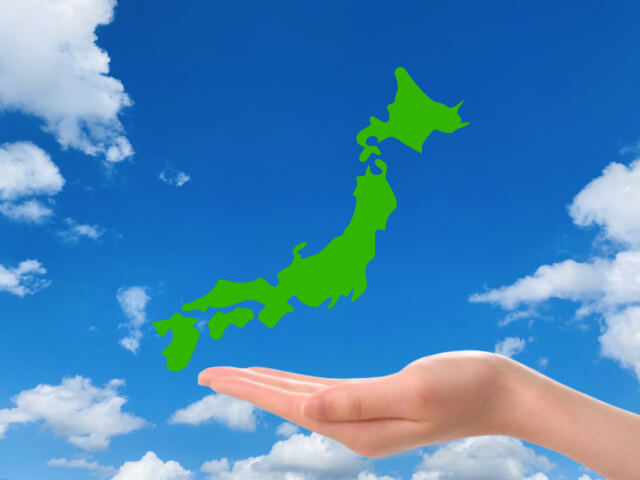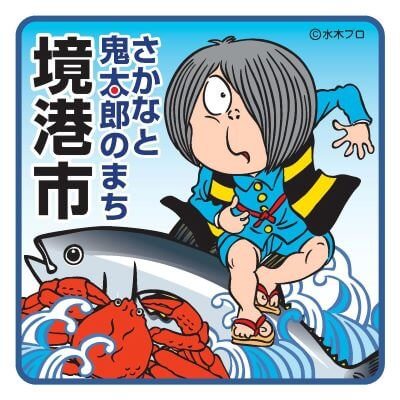※本コンテンツ内で紹介するサービスの一部または全部に広告が含まれています(PR)
Miscellaneous Names of Places in Japan|The origin of place names that are interesting and worth talking about
日本には、古くから伝わる様々な地名が存在しています。
日本の地名には、地形や歴史、人々の暮らしが反映されており、知ることで地域に対する理解が深まります。
この記事では、地名の由来に関する雑学や、日本の地名の歴史について紹介していきます。
知っているとためになる、地名のエピソードも合わせてお届けします。
In Japan, there are various place names that have been handed down from generation to generation.
Place names in Japan reflect the topography, history, and lifestyles of the people, and knowing them deepens our understanding of the region.
This article introduces miscellaneous information on the origin of place names and the history of place names in Japan.
Episodes of place names that are beneficial to know will also be presented.
日本の地名の歴史 History of Place Names in Japan

日本には長い歴史があり、時代と共に地名が作られたり、変わったりしてきました。
ここでは、日本の地名の歴史やその由来について、いくつかの視点から探っていきます。
Japan has a long history, and place names have been created and changed over time.
Here we will explore the history of place names in Japan and their origins from several perspectives.
地形から名前を付けたもの Named after the topography
日本の地名は、地域の自然や社会的状況を反映していることがよくあります。
特に、土地の形状や地理的な特徴が色濃く残っていることが多いです。
たとえば、「水」にちなんだ漢字が使われている地名は、水辺に近く水害などが多く発生していた場所と考えられています。
Place names in Japan often reflect the natural and social conditions of a region.
In particular, they often remain strongly colored by the shape of the land and its geographical features.
For example, a place name with a kanji character associated with “water” is thought to be a place near a body of water where flooding or other damage occurred frequently.
人の名前にちなんだもの Named after a person
その土地で影響力のあった人の名前が、由来となった地名もあります。
地方では豪族や地主の名前がそのまま地名になっていることや、名前のあとに山や川、峠などが付いて地名にあることもあります。
Some place names are derived from the names of people who were influential in the area.
In some regions, the name of a powerful family or landowner is used as the place name, or the name is sometimes followed by a mountain, river, or mountain pass.
時代の変遷によって付けられたもの Attached by changing times
日本の地名は、時代とともに変わることがあります。
特に、戦国時代や江戸時代には、支配者が変わるたびに地名が改称されることも珍しくありませんでした。
近年では市町村合併などにより、地名が統合されたり、新たに命名されたりしています。
古い地名と新しい地名が混在する地域も存在します。
時代ごとの地名の変遷を追うことで、その地域の歴史や社会の変化を読み取れます。
Place names in Japan sometimes change over time.
Especially during the Warring States Period and the Edo Period, it was not uncommon for place names to be changed whenever rulers changed.
In recent years, place names have been merged or newly named due to municipal mergers.
Some areas have a mixture of old and new place names.
By following the changes in place names over time, we can read about the history and social changes in the area.
面白い日本の地名の雑学6選 Six interesting miscellaneous Japanese place names

日本には、面白い地名が数多く存在します。
ここでは、そんな日本の面白い地名をエピソードとともに5つ紹介します。
There are many interesting place names in Japan.
Here we introduce five such interesting place names in Japan, along with their episodes.
増毛(ましけ) Mashike(hair growth)
北海道の増毛町(ましけちょう)は、一見すると薄毛に悩む人にとって興味深い名前に思えますが、実際の由来は関係がないようです。
増毛は、かつて鰊(ニシン)の漁獲量が非常に多い場所として知られていた地域です。
そのニシンを主な餌とするかもめが大量に飛来していたことから、アイヌ語で「かもめの多いところ」を意味する「マシュキニ」または「マシュケ」という言葉が地名の由来になったと言われています。
At first glance, the town of Mashike in Hokkaido may seem like an interesting name for those suffering from thinning hair, but its actual origin is unrelated.
Mashike was once known as a place with a very large catch of herring.
Seagulls, which feed mainly on herring, used to fly into the area in large numbers, and it is said that the word “mashkini” or “mashuke,” which means “place of many seagulls” in the Ainu language, became the origin of the name of the area.
鼻毛 Hanage(nostril hairs)
群馬県には鼻毛石町(はなげいしまち)という地名があります。
この地名は一見すると珍しく、やや恥ずかしいような印象を与えるかもしれません。
地名の由来については、地域にある「鼻石」という大岩に関連しているという説が広く知られています。
この岩は周囲約10メートルの大きさがあります。
鼻石という名前の由来は、岩に二つの穴があり、その形が鼻に似ていることから命名されたようです。
鼻毛石町という地名になった理由は、この岩の穴の周りに草などが生い茂り、それが鼻毛のように見えたためだと言われています。
In Gunma Prefecture, there is a place called Hanageishi-machi (鼻毛石町).
At first glance, this place name may seem unusual and somewhat embarrassing.
The widely held theory as to the origin of the place name is that it is related to a large rock in the area called “nose stone.
This rock is approximately 10 meters in circumference.
The name “nose stone” seems to have originated from the fact that the rock has two holes, the shape of which resembles a nose.
It is said that the reason for the name “nose hair stone town” is because grass and other vegetation grew around the holes in the rock, making it look like a nose hair.
おもちゃのまち Omochyanomachi(town of toys)
栃木県には「おもちゃのまち」という子どもが喜びそうな地名があります。
下都賀郡壬生町の地名で、東武宇都宮線には「おもちゃのまち駅」も存在します。
由来としては、1960年代にこの辺りに玩具工場が相次いで誘致され、工業団地が造られたためです。
「おもちゃのまち」という地名は、その地域の産業と歴史を直接的に表現しており、日本の地名の中でもユニークな例の一つと言えるでしょう。
In Tochigi Prefecture, there is a place called “Toy-no-machi” that children would enjoy.
It is the name of a place in Mibu-cho, Shimotsuga-gun, and there is also a “Toy-no-machi Station” on the Tobu-Utsunomiya Line.
The origin of the name “Toy-no-machi” is due to the fact that toy factories were successively attracted to this area in the 1960s, and an industrial park was built there.
The name “Toy-no-Machi” directly expresses the industry and history of the area, and is one of the most unique examples of a place name in Japan.
土々呂(ととろ)Totoro
宮崎県には「土々呂」という、ジブリアニメ「となりのトトロ」を連想させる地名があります。
「土々呂」は「ととろ」と読むことから、「となりのトトロ」との関連性が注目されていますが直接の関係はありません。
ただ、この偶然を活かし、「となりのトトロ」を想起させるような工夫を凝らしている様子が見受けられます。
例えば、一部の店舗ではトトロという言葉を店名に取り入れたり、トトロを思わせるようなロゴを使用したりしているようです。
In Miyazaki Prefecture, there is a place called “Dodoro,” a name reminiscent of the animated jiburi anime “My Neighbor Totoro.
Since “Todoro” is read as “Totoro,” it has attracted attention for its association with “My Neighbor Totoro,” but there is no direct relationship between the two.
However, taking advantage of this coincidence, some shops are making efforts to remind people of “My Neighbor Totoro”.
For example, some stores have incorporated the word “Totoro” into their store names or used logos reminiscent of Totoro.
昼飯(ひるい)Hirui(lunch)
岐阜県にはお腹が空いてしまいそうな名前の「昼飯町」があります。
以前は昼飯村という地名でしたが、現在では合併されて村はなくなり「昼飯町」になっています。
この独特な地名の由来については、以下のような興味深い説があります。
善光寺如来像を持って信濃国(現在の長野県)へ向かう途中の一行がこの地で昼食をとったことから、「昼飯」という名前がついたとされています。
In Gifu Prefecture, there is “Hirui-machi,” a town with a name that might make you hungry.
The name of the place used to be “Hirui-mura,” but the village has now been merged into “Hirui-machi.
The following is an interesting theory about the origin of this unique place name.
It is said that the name “Hirui” came about because a group of people on their way to Shinano Province (present-day Nagano Prefecture) with a statue of Zenkoji Nyorai had lunch here.
正直(しょうじき) Shoujiki(honesty)
福島県の郡山市には正直村という地名がありましたが、現在では村はなくなって正直という地名になっています。
また、埼玉県や茨城県などにも正直という地名があります。
このあたりは、正直な人が多かった地域なのかもしれませんね。
ちなみに嘘つき村という地名は存在しないようです。
There was a place called Masanao Village in Koriyama City, Fukushima Prefecture, but the village has now disappeared and the place name is Masanao.
There are also place names called Honesty in Saitama and Ibaraki prefectures.
These areas may have been areas where there were many honest people.
Incidentally, the place name Liar Village does not seem to exist.
まとめ summary
日本の地名には、歴史や自然、人々の暮らしが色濃く反映されています。
地形や自然現象、人名や出来事、さらには時代の変遷によって変わった地名など様々な由来が存在します。
地名を知ることで、その土地の歴史がわかるかもしれません。
気になった地名があれば、一度訪れてみてはいかがでしょうか
Place names in Japan strongly reflect history, nature and people’s lives.
They have a variety of origins, including geographical features, natural phenomena, names of people and events, as well as place names that have changed with the passage of time.
By learning about place names, you may be able to learn about the history of the area.
If you find a place name that interests you, why not visit it?


